Preserving and protecting the environment and promoting resource efficiency.
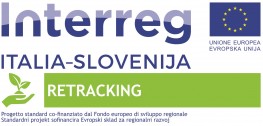
Protecting and promoting natural and cultural resources
The development of a competitive management model compliant with the European regulations for the recycling of fibre-reinforced composite (FRC) waste, which allows for the recycling, analysis, production, identification and traceability of a “secondary raw material” and creates the conditions necessary to move away from a linear economy, and towards a circular economy. The project meets the specific objective of the 3.3 program, as it involves the development and testing of innovative waste management technologies.
Half a century of FRC production has generated 80 million tonnes of products destined to reach the end of their service lives with no efficient recycling solutions. Since the early 1960s, fibreglass manufacturing has been a dominant factor in the field of mass production and has been used in various industrial sectors due to its low production costs. The problem of these products’ disposal at the end of their life cycles has now become a worldwide emergency, as there’s still no effective disposal system available.
From the linear economy to the circular economy
The aim of the project was to help create the conditions to move the area’s production sector from a linear economy to a circular economy, which contributed to the implementation of COM (2015) 614 "The missing link – the EU’s action plan for the circular economy”, proposing a circular economy model for the production of a “secondary raw material” from CFR waste (fiber-reinforced composites). .
Fibreglass recycling represents an opportunity to transform an environmental problem into jobs and new economic resources:
- cultural growth throughout the entire program area in terms of reuse, reduction and recovery of waste, for which there is already an awareness of the opportunities arising from the “green economy” that can generate both environmental and economic benefits;
- enormous potential for the development of innovative products;
- environmental benefit due to the reduction in the amount of material sent to landfills and the identification of fraudulent scrapping;
- economic benefits resulting from the use of low-cost raw materials made from recycled waste material;
- employment benefits with the creation of new jobs.
The mixed Italian-Slovenian partnership offered the possibility to test the functionality of the circular economic model in a cross-border context in order to be able to re-propose it in other European areas with problems similar to that of the program.
The project has developed (1) a technological infrastructure which, through the marking of the product label by inserting an RFID tag, allows the traceability of FRC products and (2) a web cloud platform for the management and monitoring of information relating to the various phases of recycling and transformation.
Thanks to the implementation of a pilot project, the functionality of a new circular economy model has been verified to ensure effective management of the recovery, treatment of FRC waste and its transformation into "secondary raw material" to be used for the manufacture of new products that are 100% recyclable. The technologies developed in the project make it possible to monitor new products made from recycled material and enable reverse logistics. This new model was designed to be replicable throughout Europe.
The project disseminated the new circular economy model to companies in the waste recovery and treatment sector and to producers of composite materials located in the program area. At the workshops, seminars and conferences the consortium highlighted the benefits of enabling the use of "secondary raw materials". The dissemination of the model has also affected civil society in general, which has been made aware of the issues of proper waste management and the importance of their enhancement.
CURRENT STATUS OF THE PROJECT IMPLEMENTATION (31/07/2020)
The Retracking project has been completed. In the last period, the last online seminar was organized on 29 July 2020 for students and staff from the academic world, to whom the results of the project were prsented. We are particularly satisfied with the consolidated cooperation between Slovenian companies and Gees Recycling as a direct consequence of the networking on our events, and the result is the realization of the circular economy model developed in the project. The recycling and conversion of composites waste and the integration of RFID chips for waste monitoring is being carried out successfully.
Lead Partner
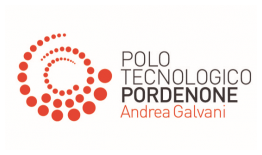
Project partner 1
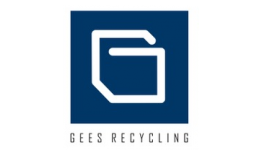
Project partner 2
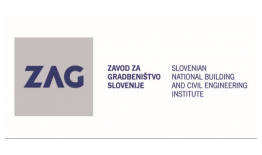
Project partner 3
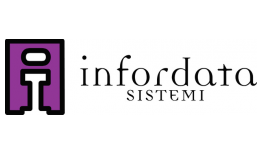
Project partner 4
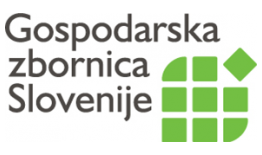
| Poster evento annuale 30/05/2018 RETRACKING_ITA_2.pdf ( 534 bytes, published on 26 July, 2018 - 11:17 ) | |
| Brochure Brošura - Brochure - Opuscolo - SLO - IT.pdf ( 1 byte, published on 8 January, 2020 - 11:57 ) | |
| Retracking project newsletter no. 1 Retracking-e-News-No-1_IT.pdf ( 539 bytes, published on 9 January, 2020 - 14:37 ) | |
| Retracking project newsletter no. 2 Retracking e-News No 2_February 2019_IT.pdf ( 471 bytes, published on 9 January, 2020 - 14:37 ) | |
| Retracking project newsletter no. 3 Retracking_e-News_No_3_April_2019_IT.pdf ( 384 bytes, published on 9 January, 2020 - 14:37 ) | |
| Retracking project newsletter no. 4-5 Retracking e-News No 4-5_June 2019_IT.pdf ( 386 bytes, published on 13 January, 2020 - 14:11 ) | |
| Retracking project newsletter no. 6 - 7 Retracking_6-7-ita_0.pdf ( 330 bytes, published on 13 January, 2020 - 14:11 ) | |
| Retracking project newsletter no. 8 Retracking_8-ita.pdf ( 382 bytes, published on 4 March, 2020 - 14:34 ) | |
| Retracking project newsletter no. 9 Retracking e-News No 9_Dicembre 2019_IT.pdf ( 420 bytes, published on 13 January, 2020 - 14:11 ) | |
| Retracking project newsletter no. 10 Retracking e-News No 10_Febbraio 2020_IT.pdf ( 646 bytes, published on 4 March, 2020 - 14:34 ) | |
| The Waste Catalogue of the Programme Area Katalog odpadkov GFRP.pdf ( 2 bytes, published on 13 January, 2020 - 14:11 ) | |
| RETRACKING ARTICLE: New applications for recycled fibre-reinforced composites in the building sector GEES Retracking article_ANG.pdf ( 588 bytes, published on 3 March, 2020 - 10:12 ) | |
| RETRACKING ARTICLE: Development of methodologies for the application and reading of RFID chips in glass fiber reinforced polymer Retracking Tehnični članek_infordata_ANG.pdf ( 444 bytes, published on 3 March, 2020 - 10:12 ) |
MAIN OBJECTIVES OF THE PROJECT
The RETRACKING project wanted to develop a competitive model for the proper management of waste generated from products made of glass-fiber-reinforced polymer composites (FRC). The model is intended to support the recycling of this material flow by analyzing it from production onwards. Improved visibility and traceability of the material flow aim to create the conditions for the transition from a linear to a circular economy.
PROJECT ACTIVITIES
The Retracking project has produced excellent technological and scientific results on the subject of mechanical recycling of fiberglass and other thermosetting matrix plastics and has defined a circular business model for the management and treatment of waste, aligned with current regulations on the subject of circular economy.
On the hardware side, the project has developed a pilot plant for the recycling of waste in CFR and for the production of new products in recycled material, equipped with RFID tags in which information on the original components (waste), on the production process and on the products made from recycled material.
On the software side, the project has developed a web platform that has made it possible to collect data from all stages of the process and therefore the integral tracking of waste and its transformation into new products.
Thanks to the web platform and the information coming from the RFID tags, the project achieved the full digitalization of the processes of the machines used for recycling and production and made it possible to create products capable of transmitting information and communicating with users.
The consortium acquired information on the current quantities produced and on the CFR waste management methods in the Program Area, with the aim of detecting the potential for the introduction of a new circular business model based on innovative Retracking technologies.
The project also carried out communication and dissemination activities that made it possible to interact with stakeholders both to acquire information on current forms of waste management in CFR, and to transfer project results.
A description of the project activities is provided below
RETRACKING SYSTEM
COGNITIVE ANALYSIS OF THE PROGRAM AREA
As part of this activity, information was acquired on the current quantities produced and the CFR waste management methods in the Program Area (in the image below), with the aim of detecting the potential for the introduction of a new circular business model based on innovative Retracking technologies.

In particular,the following activities were carried out:
The project has produced the document "Waste Catalogue of the Program Area" (the document can be found in the project documents section in Italian, Slovenian and English) in which an explanation is given of what fiber reinforced composites (CFRs) are, how the waste can be identified and what are the waste categories within which CFRs can be found.
According to the European Waste Catalogue (EWC) introduced by Directive 75/442/EEC, waste must be classified by a waste code. However, there is no specific waste code for CFRs and this creates difficulties in the management of waste for recycling. The objective of the document is therefore to provide guidance to enable better identification and management of CFR waste by waste managers.
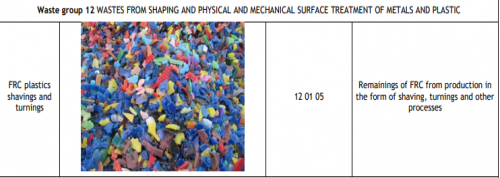
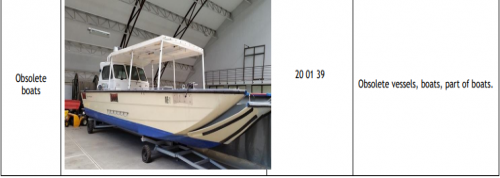
In the images above, we show some of the waste codes identified by the Retracking Waste Catalog, which are used to classify CFR waste.
The survey identified the amounts of CFR waste generated in the Program area and the companies involved in the generation and management of CFR waste.
The analysis was conducted in Italy thanks to data from ARPAV - Regional Agency for Environmental Prevention and Protection of Veneto (associated partner) and Regional Agency for Environmental Protection of Friuli Venezia Giulia, and in Slovenia by the Slovenian Environment Agency (ARSO).
CFR Producers, CFR waste collectors, and CFR waste processors and recyclers were then mapped.
Using the results of the interviews with these individuals and the project workshops, it was then possible to trace the current ways in which CFR products are managed by CFR waste producers.
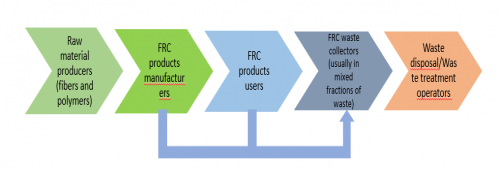
The figure above depicts the current value chain of CFR product production and CFR waste management. A value chain identifies all the activities and actors involved in the creation of a product or service.
The analysis revealed that CFRs are currently managed according to a linear model in which waste is generated at two steps in the chain:
In the first case the waste is uniform and homogeneous in composition, while in the second case the waste is highly heterogeneous and difficult to trace as it can be found under different waste codes.
The analysis therefore identified the first waste stream as the most promising to be leveraged within a circular business model.
The circular business model developed at Retracking involves the valorization of CFR waste (mainly industrial waste) into CFR panels made through a mechanical recycling process and thanks to a digital platform dedicated to the traceability of new products and the interaction between the different actors in the value chain.
With Retracking's circular business model, a more circular value chain can be achieved.
In the image above you can see 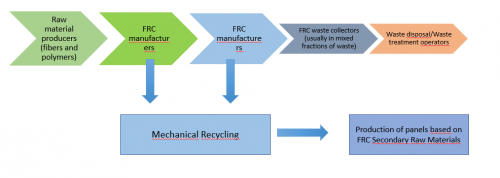 that thanks to Retracking, the waste produced in the production and end-of-life phases of CFR products is recycled and transformed into products made from secondary raw materials. This decreases the amount of CFR waste going to treatment and disposal operations.
that thanks to Retracking, the waste produced in the production and end-of-life phases of CFR products is recycled and transformed into products made from secondary raw materials. This decreases the amount of CFR waste going to treatment and disposal operations.
Below is a description of the innovative technologies that are part of Retracking's circular business model.
COMMUNICATION ACTIVITIES
Retracking's communication activities aimed to ensure high visibility of the project, its contents and results. The activities that have been carried out have made it possible to establish and maintain the interest of end users and stakeholders in the project activities. Thanks to the communication activities it was also possible to disseminate the results and carry out technology transfer actions towards all stakeholders and citizens in general.
Events
Initial conference in FVG
The conference took place on Monday 29 January 2018 in Trieste at the Friuli Venezia Giulia Region Building. The program included presentations of the project and interventions by the Italian Ministry of the Environment, Land and Sea Protection and the European Composites Industry Association (EuCIA).
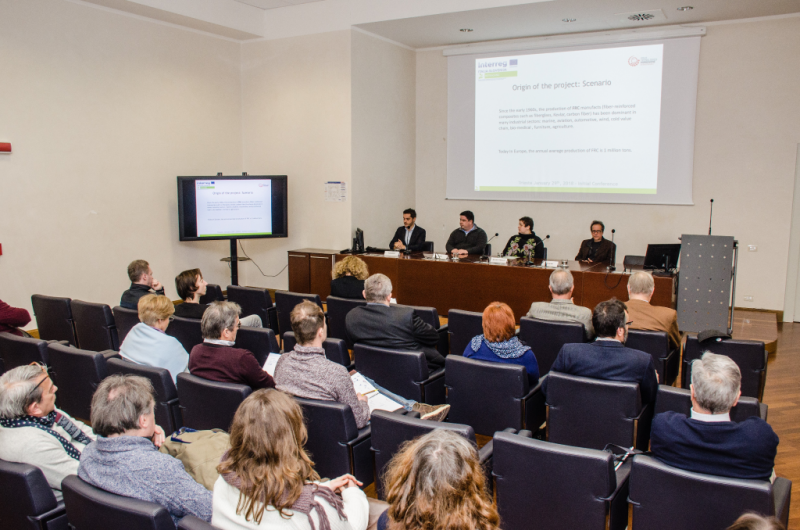
Intermediate conference in Veneto
The conference took place on the 7th of March 2019 in Venice in Regione Veneto Palace. The conference program included presentations of the catalog of waste products containing GRFP prepared within the project framework, together with an overview of waste cross border shipment rules and green public procurement, as well as experience and research linked to optimization of FRP waste management. The conference was attended by approximately 30 representatives from enterprises and other entities within the program area.
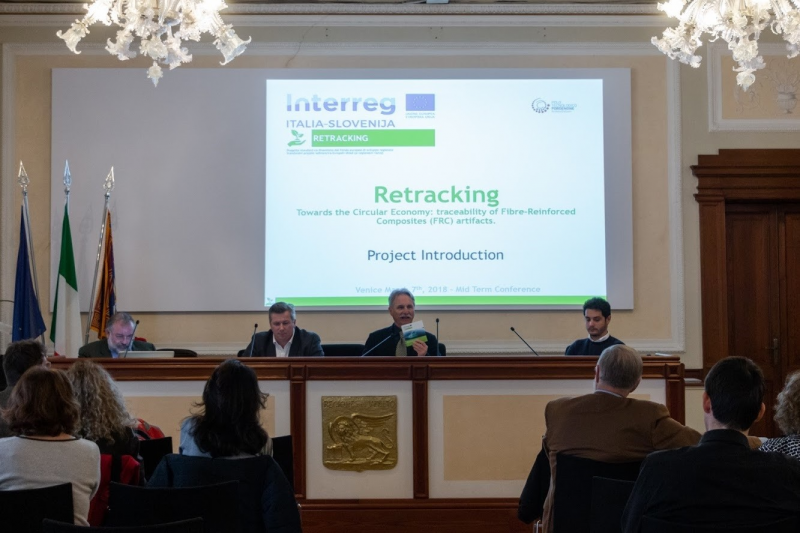 https://youtu.be/BCh6Hxk36bE https://youtu.be/BCh6Hxk36bE
https://youtu.be/BCh6Hxk36bE https://youtu.be/BCh6Hxk36bE
Final conference in Slovenia
The conference took place on 29 November 2019 in Ljubljana at the Slovenian Chamber of Commerce and Industry (GZS)
The conference was entitled "plastics and composites in the waste hierarchy" and was aimed at environmental experts on waste, companies that in the production of their products generate waste in composite and plastic materials, users of these products, waste collectors and recyclers and other stakeholders from the program area (Interreg Italy - Slovenia). During the conference the project results were disseminated and interventions on alternative strategies for the enhancement of plastic materials in general were hosted.

Workshop for Italian target group 1 / Workshop for Slovenian target group 1
The two workshops were aimed at waste producing companies in CFR and addressed the challenges of new legislation on waste management and the transition to a more circular economic model for products containing GFRP.
The first workshop organized by GZS took place in Ljubljana on the 25th of October 2018. The second workshop organized by Polo Tecnologico took place on the 9th of November 2018 in Pordenone.
Slovenian workshop
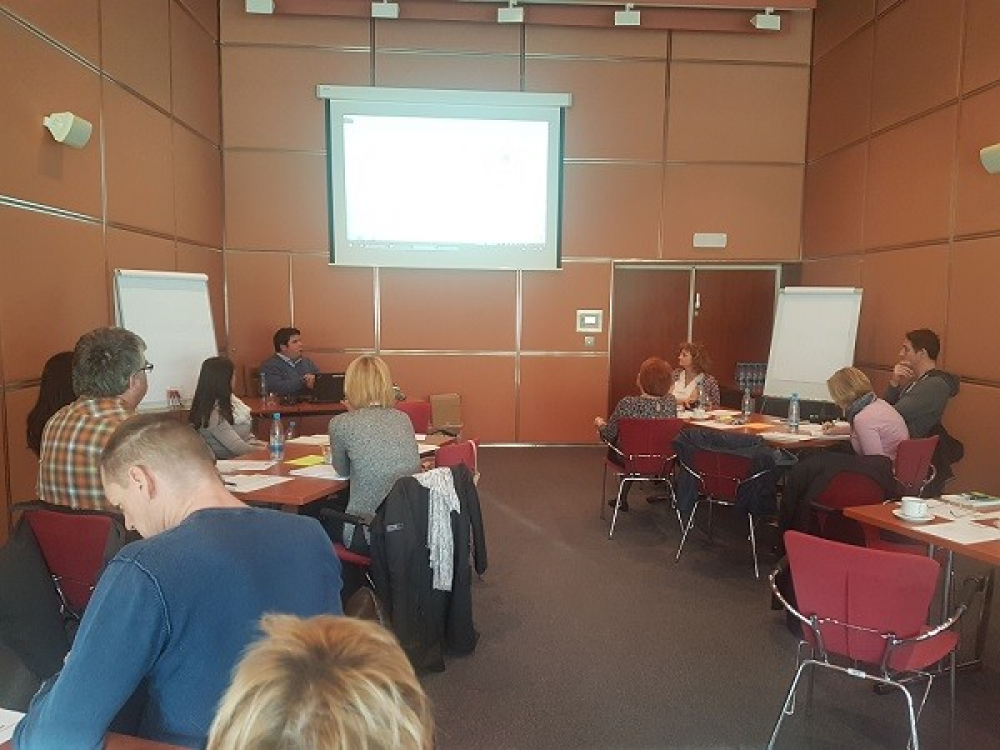
Italian Workshop
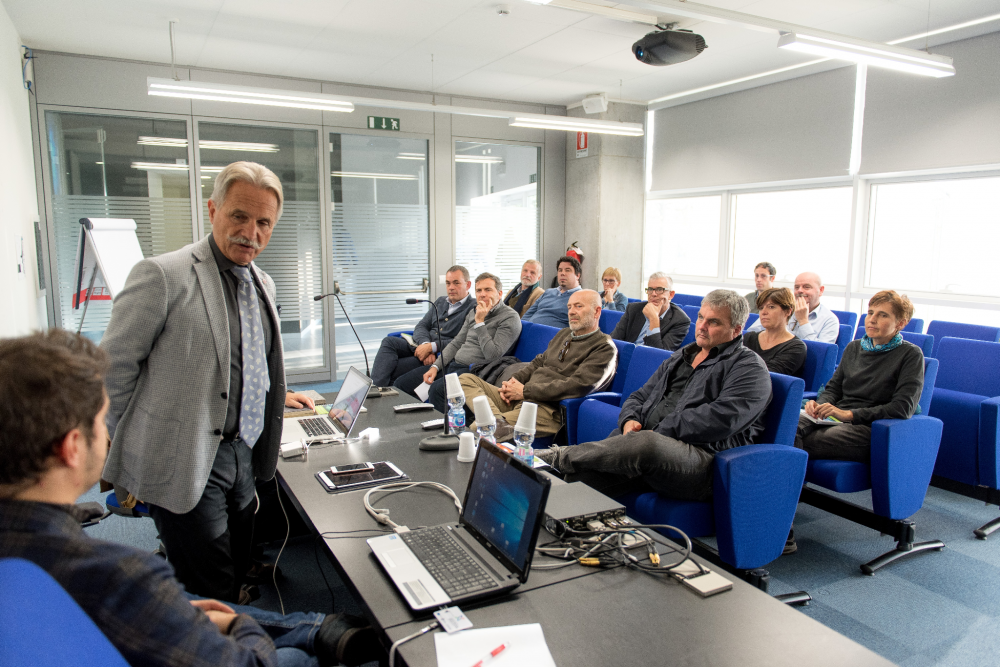
Workshop for the Italian target group 2 / Workshop for the Slovenian target group 2
The two workshops were aimed at waste collectors and processors and other interested parties. The first workshop was organized on the 10. May 2019 in Ljubljana by GZS, the second was organized on the 11. July 2019 in Pordenone by Polo Tecnologico. The main topic of the workshops was the identification of GFRP products and their appropriate waste management, The waste catalog of GFRP products was presented in greater detail together with cross border waste shipment rules
Italian workshop
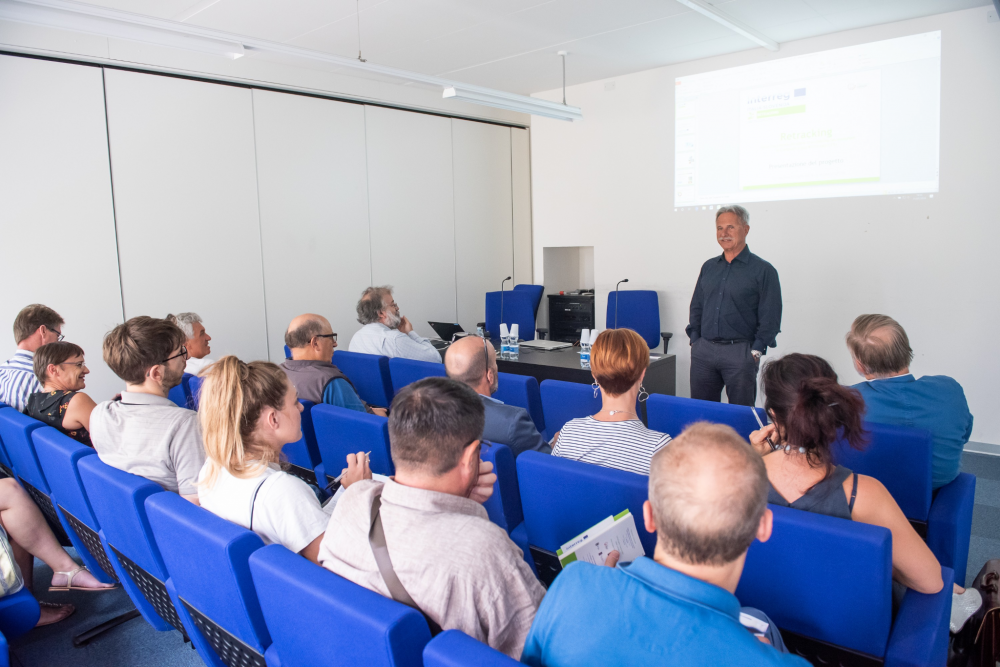
Slovenian workshop
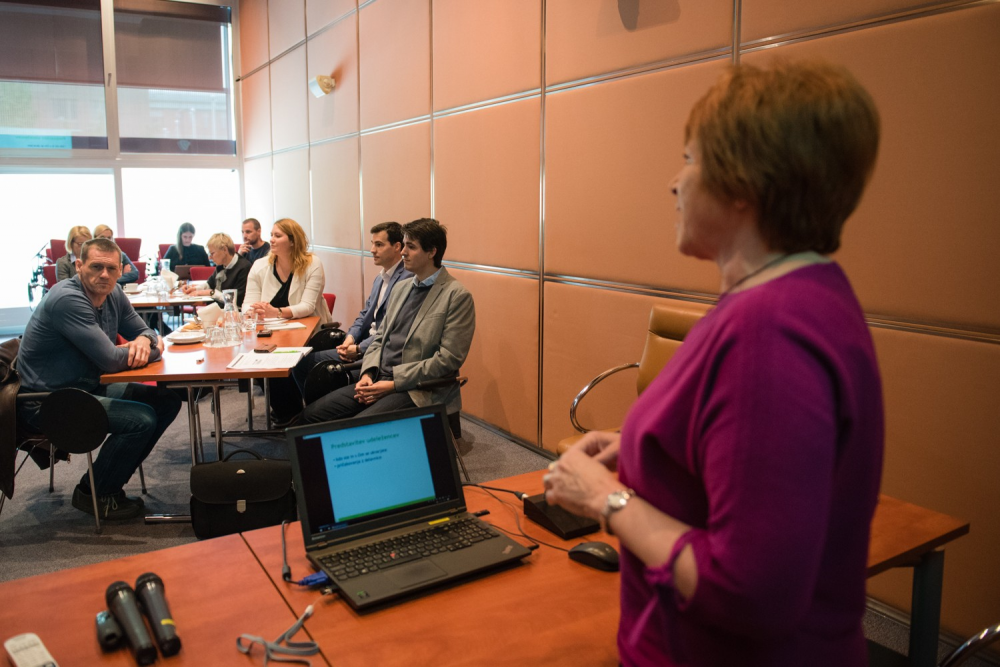
Cross-border workshop for the Italian and Slovenian target group 1 and 2
The workshop took place on 24. October in Nova Gorica. The workshop was aimed at producers of scraps and waste in fiber-reinforced composites, waste collectors, waste processors and other interested parties from Italy and Slovenia.
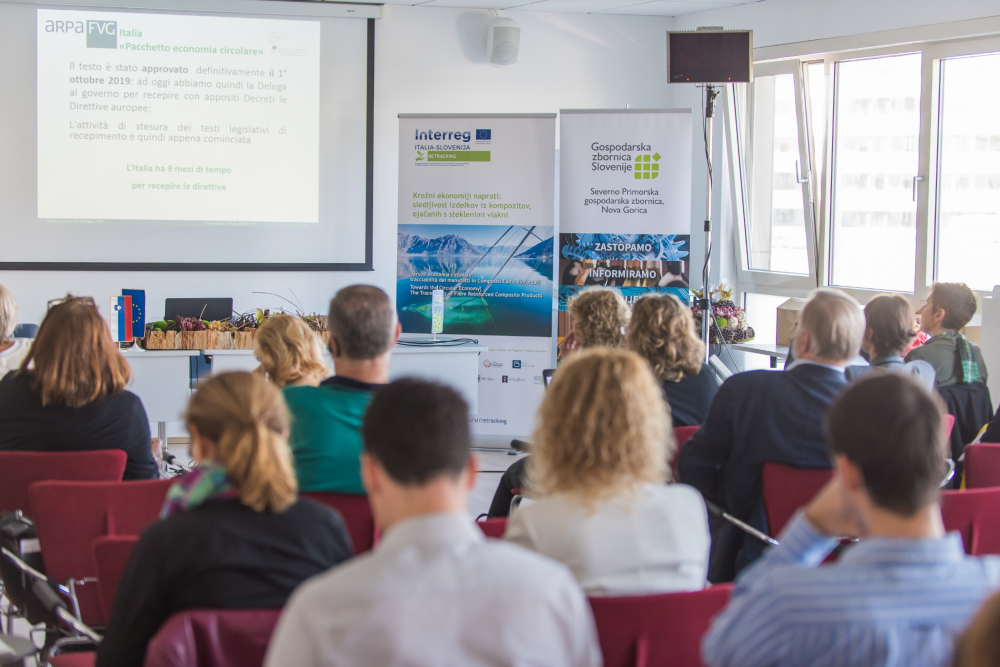
Seminars in Italy and Slovenia
The two seminars were held with the aim of disseminating the results of the project to subjects belonging to the academic field (teachers and students).
The Slovenian seminar was held on Thursday 23 January 2020 at the University of Nova Gorica, in Vipava. The Italian seminar was held on February 26, 2020 and was organized in webinar mode with the support of the University of Trieste.
Slovenian seminar
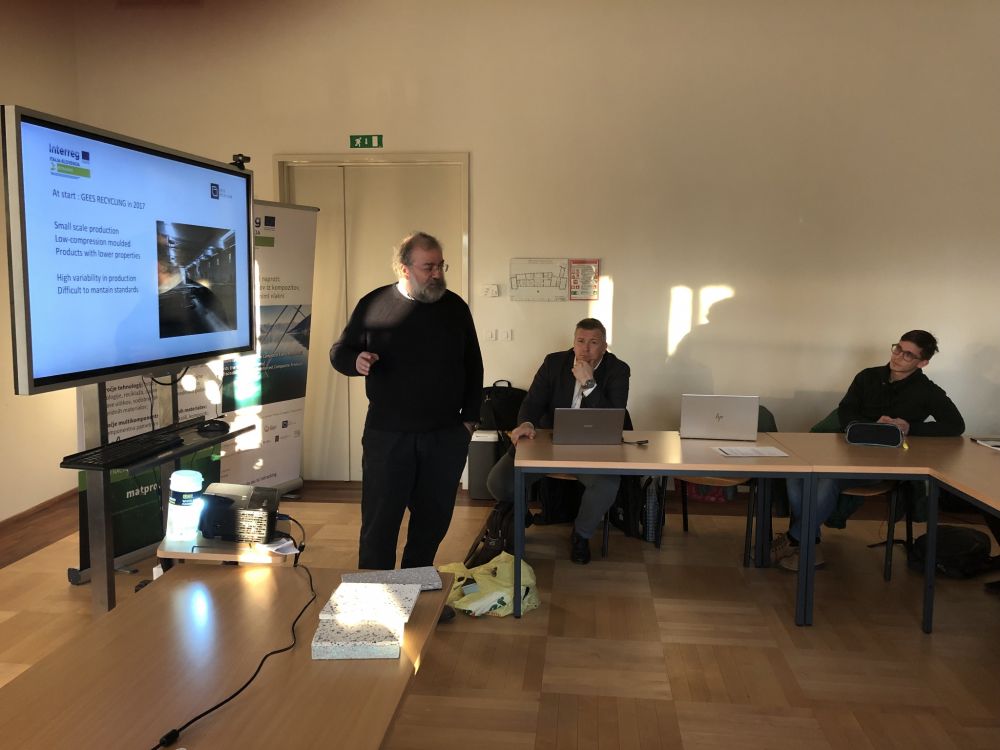
Italian seminar
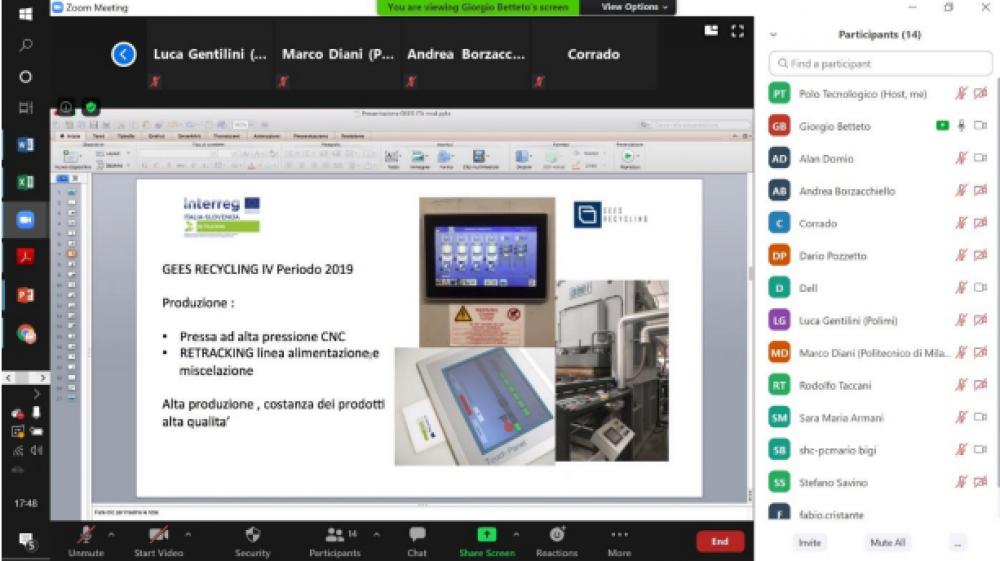
Dissemination (brochures, flyers, leaflets, etc.) to be used in the course of press conferences and public conferences
To raise awareness the chamber team working on Retracking prepared and launched an animation to inform the general public on appropriate management of waste products containing GRFP. The animation has been prepared in an Italian and Slovenian version.
Slovenian version
Italian version
Leaflet
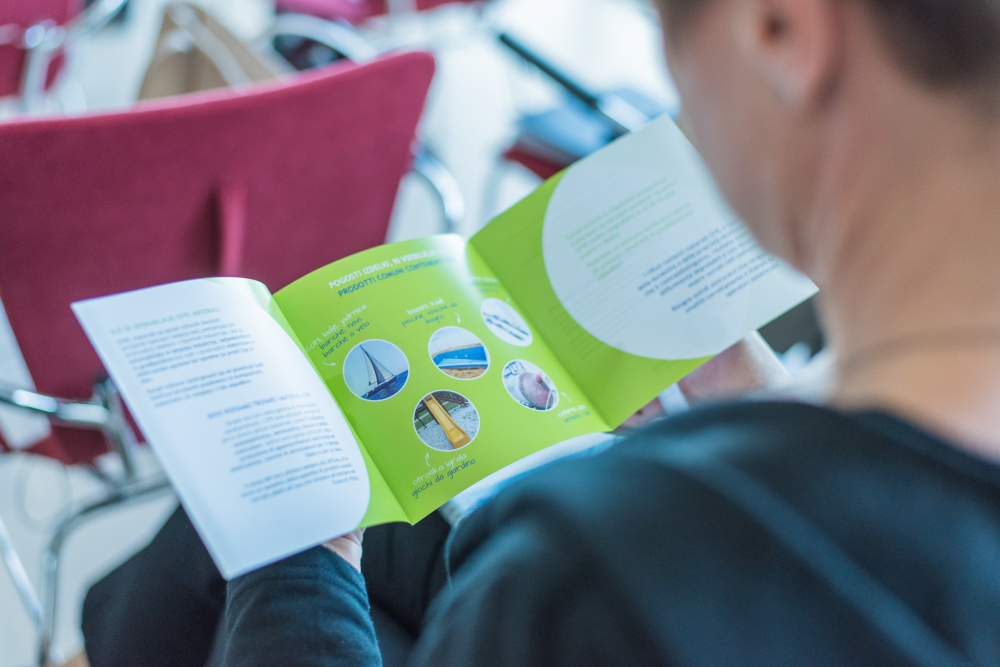
A leaflet was prepared within this work package »How to manage waste containing glass fiber reinforced composites«, targeting the wider public. The leaflet describes the main characteristics of glass fiber reinforced materials (GFRP), their most common application in products and how to recognize them and manage them accordingly. The brochure is intended to raise recognition of waste containing GFRP.

Social media account
The following accounts have been activated:
linkedIn https://www.linkedin.com/groups/12147013/
Twitter https://twitter.com/rinterreg
Facebook https://www.facebook.com/RetrackingInterreg/
Youtube https://www.youtube.com/playlist?list=PLKmNGkUTc-jYHyGOsnVe3MM9lLUlV5E_V
Information material to be distributed during the workshops
To facilitate the activities of the workshops and promote the project, a promotional booklet (80 pages) was created. The first and last pages of the notebook provide information about the project with key messages and project goals. Pens with the Retracking logo were also produced. The notebooks and pens were distributed to the workshop participants.
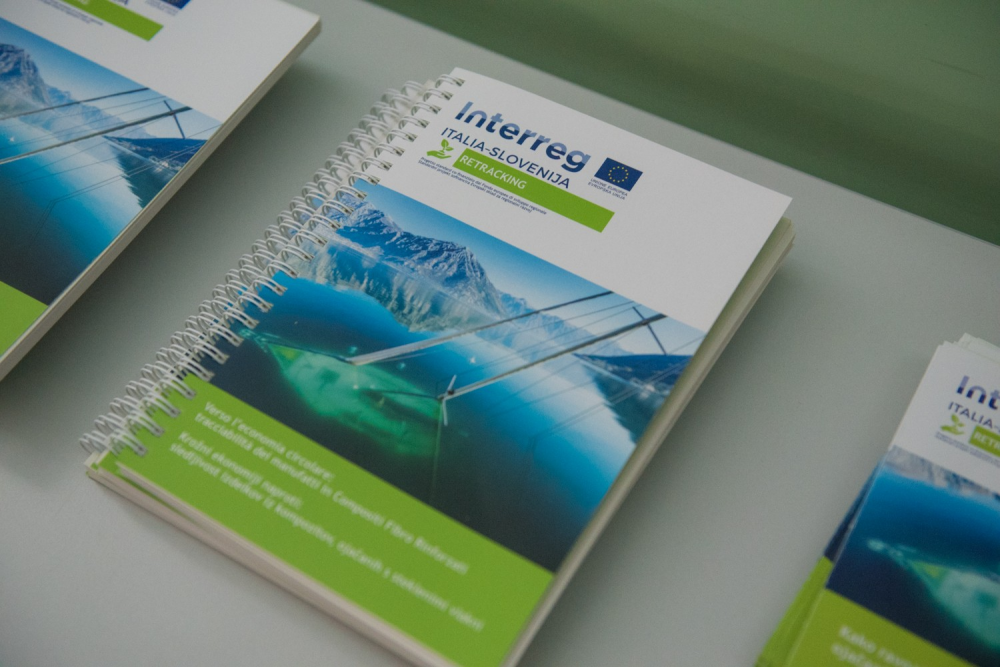

Newsletters
The newsletters have been prepared in three separate documents, in Slovenian, in Italian and in English. The newsletter contains information on the project's activities and events, as well as a small lexicon on the circular economy and other news of interest related to the project.
Slovenian Newsletters https://www.ita-slo.eu/sl/retracking (Projektni dokumenti)
Italian Newsletters https://www.ita-slo.eu/it/retracking (Documenti di progetto) English Newsletters https://www.ita-slo.eu/en/retracking (Project documents)
Technical publications on tracking and recycling systems in Italian, Slovenian and English to ensure dissemination to a large number of subjects
Two publications were made:
Development of methodologies for the application and reading of RFID chips in CFR panels
New applications for composite materials reinforced with recycled fibers in the construction sector
https://www.ita-slo.eu/sites/default/files/progetti/GEES%20%20Retracking%20article_ANG.pdf